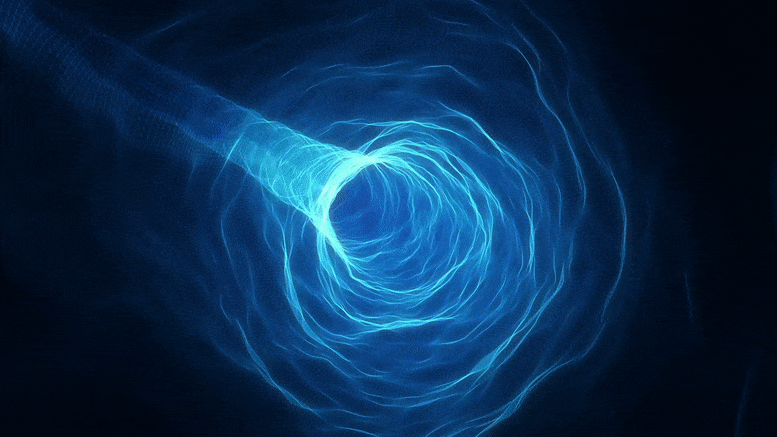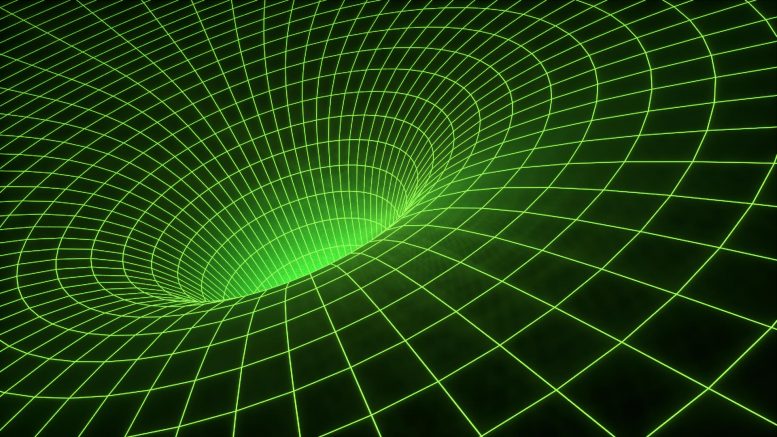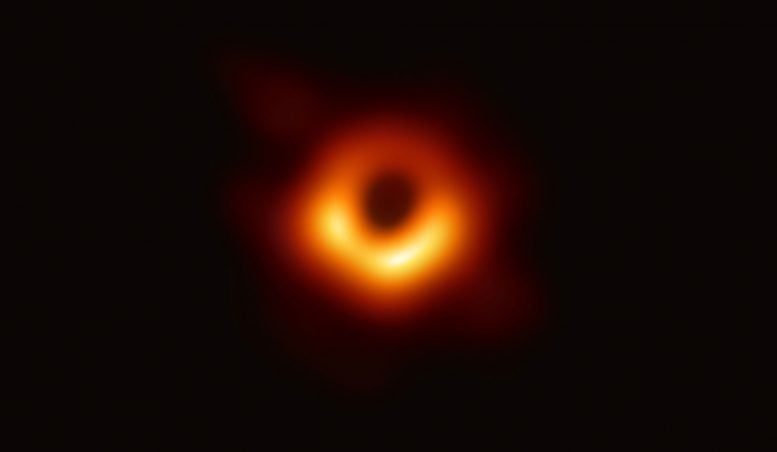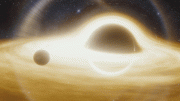
Albert Einstein’s theory of general relativity profoundly changed our thinking about fundamental concepts in physics, such as space and time. But it also left us with some deep mysteries. One was black holes, which were only unequivocally detected over the past few years. Another was “wormholes” – bridges connecting different points in spacetime, in theory providing shortcuts for space travelers.
Wormholes are still in the realm of the imagination. But some scientists think we will soon be able to find them, too. Over the past few months, several new studies have suggested intriguing ways forward.
Black holes and wormholes are special types of solutions to Einstein’s equations, arising when the structure of spacetime is strongly bent by gravity. For example, when matter is extremely dense, the fabric of spacetime can become so curved that not even light can escape. This is a black hole.
As the theory allows the fabric of spacetime to be stretched and bent, one can imagine all sorts of possible configurations. In 1935, Einstein and physicist Nathan Rosen described how two sheets of spacetime can be joined together, creating a bridge between two universes. This is one kind of wormhole – and since then many others have been imagined.
Some wormholes may be “traversable,” meaning humans may be able to travel through them. For that though, they would need to be sufficiently large and kept open against the force of gravity, which tries to close them. To push spacetime outward in this way would require huge amounts of “negative energy.”
Sounds like sci-fi? We know that negative energy exists, small amounts have already been produced in the lab. We also know that negative energy is behind the universe’s accelerated expansion. So nature may have found a way to make wormholes.
Spotting wormholes in the sky
How can we ever prove that wormholes exist? In a new paper, published in the Monthly Notices of the Royal Society, Russian astronomers suggest they may exist at the center of some very bright galaxies, and propose some observations to find them. This is based on what would happen if matter coming out of one side of the wormhole collided with matter that was falling in. The calculations show that the crash would result in a spectacular display of gamma rays that we could try to observe with telescopes.

Could we travel to other universes using wormholes?
This radiation could be the key to differentiating between a wormhole and a black hole, previously assumed to be indistinguishable from the outside. But black holes should produce fewer gamma rays and eject them in a jet, while radiation produced via a wormhole would be confined to a giant sphere. Although the kind of wormhole considered in this study is traversable, it would not make for a pleasant trip. Because it would be so close to the center of an active galaxy, the high temperatures would burn everything to a crisp. But this wouldn’t be the case for all wormholes, such as those further from the galactic center.
The idea that galaxies can harbor wormholes at their centers is not new. Take the case of the supermassive black hole at the heart of the Milky Way. This was discovered by painstakingly tracking of the orbits of the stars near the black hole, a major achievement that was awarded the Nobel Prize in Physics in 2020. But one recent paper has suggested this gravitational pull may instead be caused by a wormhole.
Unlike a black hole, a wormhole may “leak” some gravity from the objects located on the other side. This spooky gravitational action would add a tiny kick to the motions of stars near the galactic centre. According to this study, the specific effect should be measurable in observations in the near future, once the sensitivity of our instruments gets a little bit more advanced.
Coincidentally, yet another recent study has reported the discovery of some “odd radio circles” in the sky. These circles are strange because they are enormous and yet not associated with any visible object. For now, they defy any conventional explanation, so wormholes have been advanced as a possible cause.
A can of worms
Wormholes hold a strong grip on our collective imagination. In a way, they are a delightful form of escapism. Unlike black holes which are a bit frightening as they trap everything that ventures in, wormholes may allow us to travel to faraway places faster than the speed of light. They may in fact even be time machines, providing a way to travel backwards – as suggested by the late Stephen Hawking in his final book.
Wormholes also crop up in quantum physics, which rules the world of atoms and particles. According to quantum mechanics, particles can pop out of empty space, only to disappear a moment later. This has been seen in countless experiments. And if particles can be created, why not wormholes? Physicists believe wormholes may have formed in the early universe from a foam of quantum particles popping in and out of existence. Some of these “primordial wormholes” may still be around today.

Wormholes may have arisen in the early universe.
Recent experiments on “quantum teleportation” – a “disembodied” transfer of quantum information from one location to another – have turned out to work in an eerily similar way to two black holes connected through a wormhole. These experiments appear to solve the “quantum information paradox,” which suggests physical information could permanently disappear in a black hole. But they also reveal a deep connection between the notoriously incompatible theories of quantum physics and gravity – with wormholes being relevant to both – which may be instrumental in the construction of a “theory of everything.”
The fact that wormholes play a role in these fascinating developments is unlikely to go unnoticed. We may not have seen them, but they could certainly be out there. They may even help us understand some of the deepest cosmic mysteries, such as whether our universe is the only one.
Written by Andreea Font, Senior Lecturer of Astrophysics at Liverpool John Moores University.
Adapted from an article originally published on The Conversation.![]()









Not likely.
Too much to say here but I would ask this, which came first? Was it the complexity or the utility of any information?
I’ve read of many wrong answers but I’m not certain anyone is thinking about the applicable one.
Relevance? The article do not describe complexity or information research.
FWIW since there are many measures of complexity and they have different aims – like complexity classes (measures solution step size) and Kolmogorov complexity (measures program size) in computer science – there isn’t any one “applicable”. It depends on your system [ https://en.wikipedia.org/wiki/Complexity ]. ” Neil Johnson states that “even among scientists, there is no unique definition of complexity – and the scientific notion has traditionally been conveyed using particular examples…””.
In nature there isn’t any “utility of information” of course – the universe is a result of a process and has no purpose or utility as we humans invent for our own persons – the universe just is. Information also is an area of many measures such as Shannon information (measures information transmitted over a communication channel) or Kolmogorov complexity (measures program size) and so is system and measure dependent. One interesting measure of nature complexity is structure complexity as observed in cosmology – the universe starts out simple (inflationary vacuum), maximizes galaxy cluster density at about 6 billion years and is now diluting towards simplicity again (heat death vacuum).
… a better approach to leave it to a maggots …
Our math is way too infantile to figure something like this out. We are going to have to wait for an AI that can break through the veil that holds us back. The true knowledge is there. We just are incapable of seeing it atm.
Since we now know space is 3D flat on cosmological scales, extradimensional wormholes became an even more extraordinary proposal – the wrong direction for anything promising.